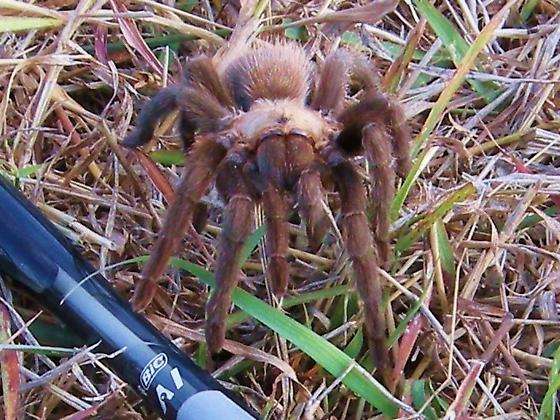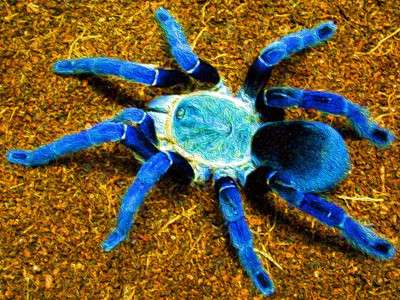
The Texas tan tarantula, also known as Aphonopelma anax, is a species of spider from the Theraphosidae family that is indigenous to southern Texas and northern Mexico.
Description
The species, which generally reaches a leg span of 5 inches at full maturity with some females reaching a 6-inch span, is one of the largest tarantulas found in the United States. It grows very slowly and takes many years to reach maturity, like the majority of Aphonopelma species. Like with most tarantula species, females are much larger than males and have far more bulk. Once they reach adulthood, males also develop bulbs on the ends of their pedipalps in addition to having greater leg spans and smaller bodies. These are used to reproduce.
As its name implies, A. anax’s coloring is mainly composed of dark shades of brown and tan. Its coloring is comparable to that of Aphonopelma hentzi, a typical Texas species, but it is much darker. This species lacks stridulating hairs on its chelicerae but shares urticating hairs with many New World tarantulas.

Geographical Location and Habitat
In Cameron County and Kleberg County in Southeast Texas, the Texas tan tarantula has been observed. They can be found in northern Mexico as well. They can be found in towns as well as the grasslands and shrub woodlands that line the region, which places their distribution in a semiarid environment.
This species, like the majority of tarantulas, makes a silk-lined tunnel rather than a traditional web as its home. The tarantula may dig these burrows on its own, but more often than not, it may only alter an existing burrow or other suitable habitat. These environments may contain dead trees, abandoned rodent tunnels, piles of wood, or uncultivated nooks and crannies.
Diet
Insects including crickets, grasshoppers, beetles, moths, mealworms, and cockroaches are commonly found in tarantula diets.
Life Cycle
A. anax females are capable of producing large numbers of eggs. The female weaves an egg sac that is actively defended inside the burrow, where the eggs are placed. In a process known as brooding, the female additionally rotates the egg sac to prevent deformations. After a few weeks, the eggs hatch, and the spiderlings may remain with the females for a while before splitting out to fend for themselves. It has been reported that females can live up to 40 years. The longevity may be longer, but no research has lasted this long. Males rarely survive past two years after reaching sexual maturity.
Interactions with Humans
A. Anax is non-aggressive and avoids conflict with people and larger animals, like many tarantula species do. Along with A. hentzi, its docile nature makes it particularly sought-after in the pet trade. However, if provoked, the tarantula will use its rear legs to kick some of its irritant hairs in the direction of the prospective danger. These hairs may produce a slight irritation and/or edoema if they come into contact with mucous membranes or bare skin. An allergic skin reaction in people might exacerbate symptoms. Reaction times range from several hours to weeks. A. Anax will rear up on its hind legs and lift its front legs in the traditional tarantula “threat stance” in addition to kicking its itchy hairs.
Table





